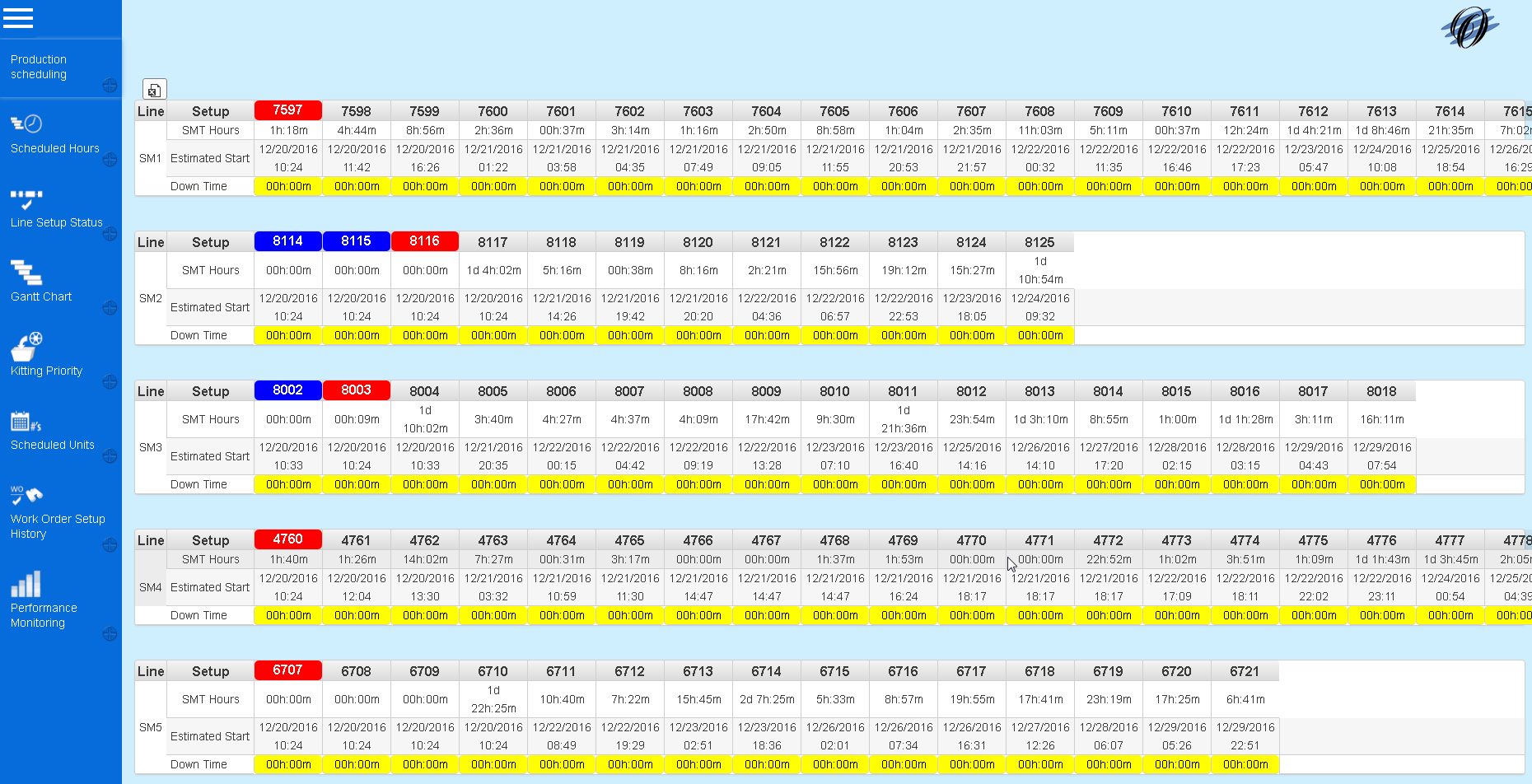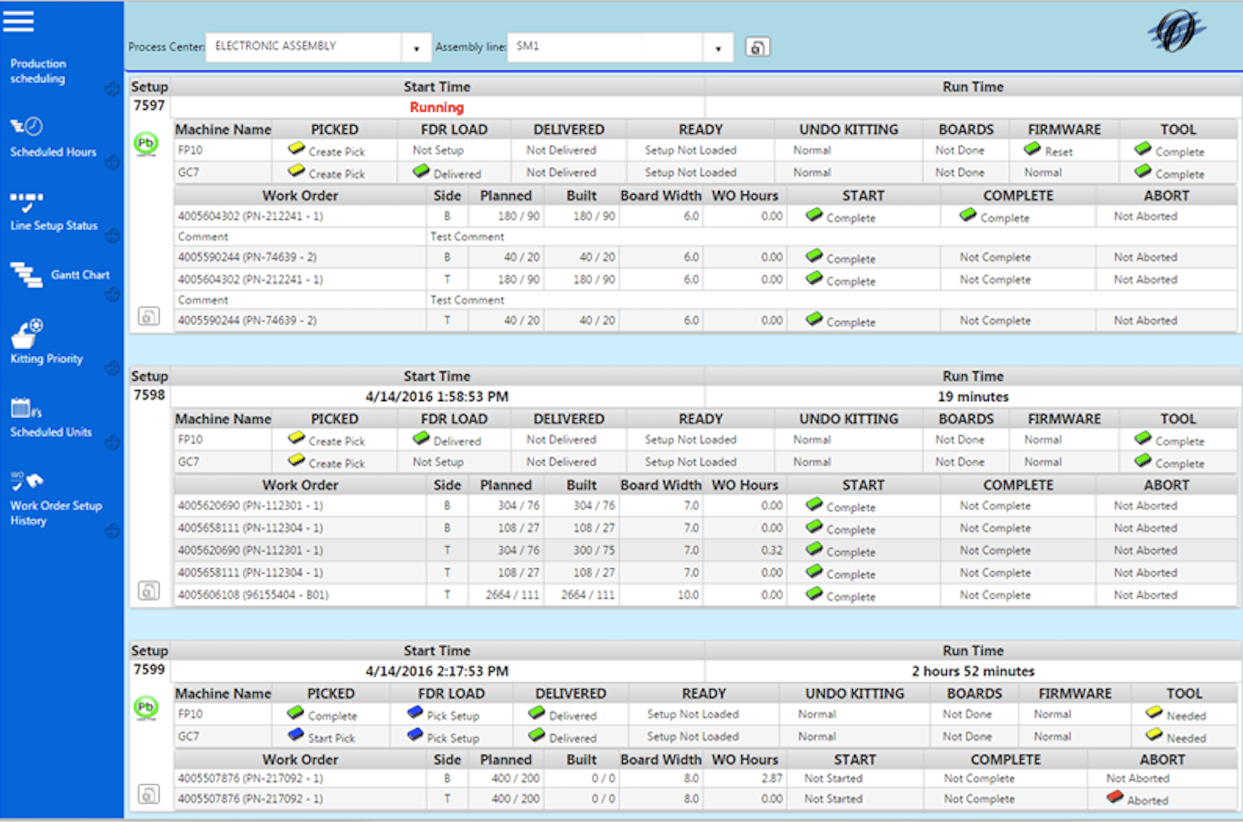The manufacturing execution process implemented in Optel is driven by a production schedule generated from work orders released by your manufacturing plant’s ERP system. Optel’s Dynamic Production Scheduling module accommodates work order scheduling for multiple mixed-vendor and mixed-technology assembly lines. This module supports optimized family setups (common parts), single work order setups, and combined family and single board setups – enabling you to more easily adapt your assembly process to handle a wide variety of production types, regardless of mix or volume requirements. Optel also optimizes the fixed feeder setup, rather than just the groups; thus, the range of assemblies that can be included in a group is much broader, further increasing production and flexibility.



